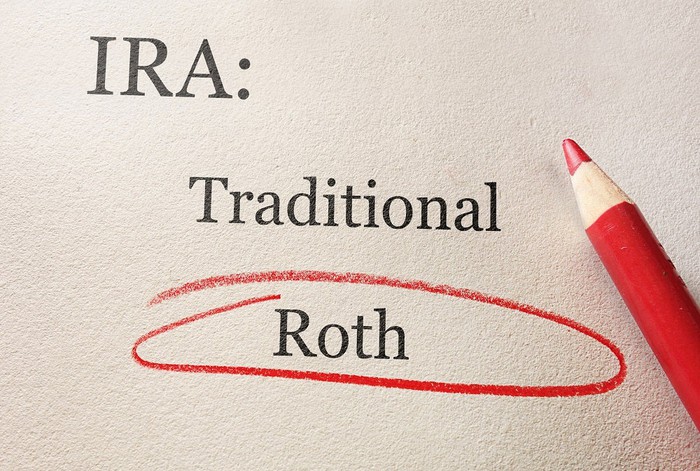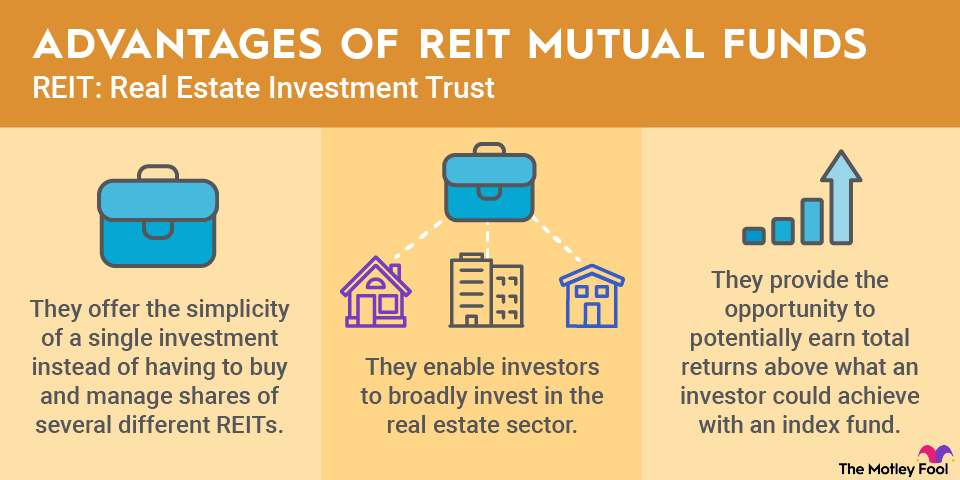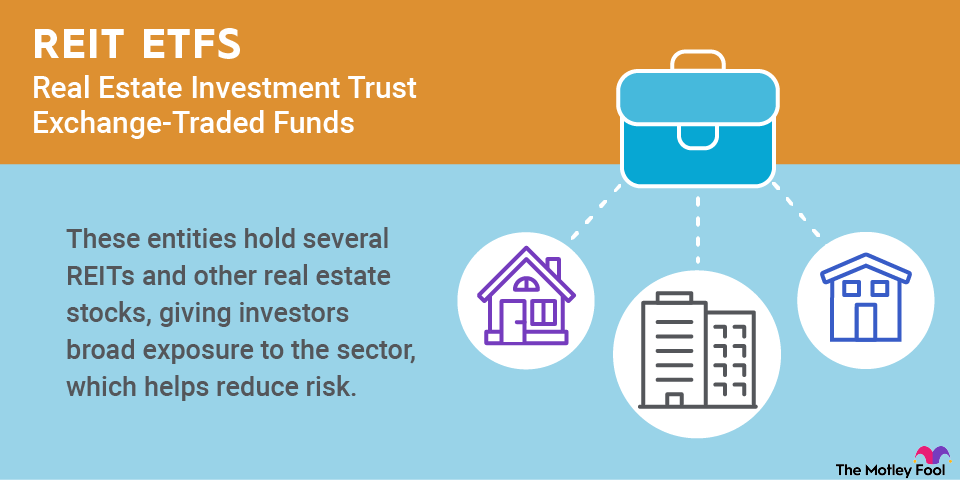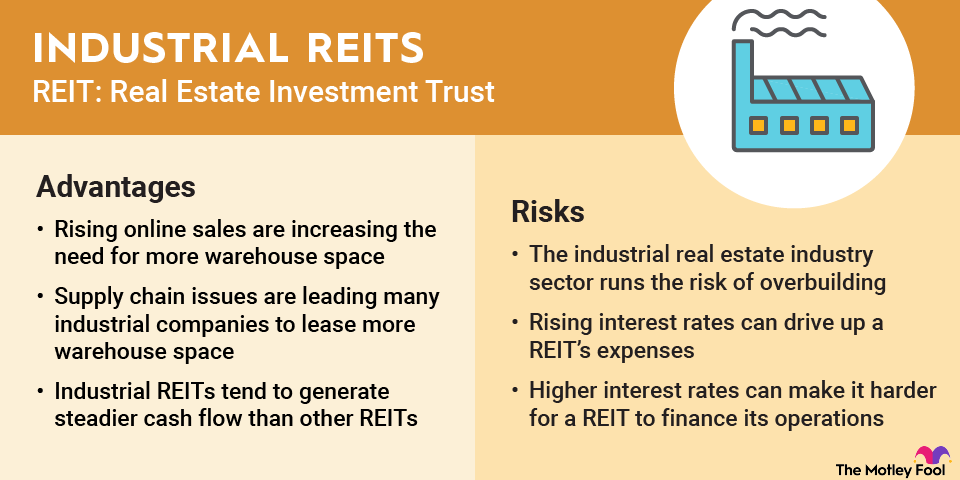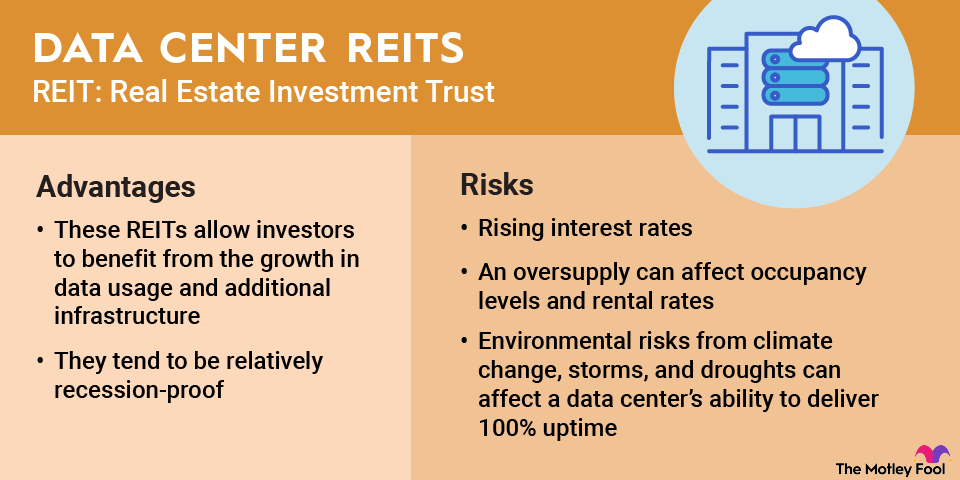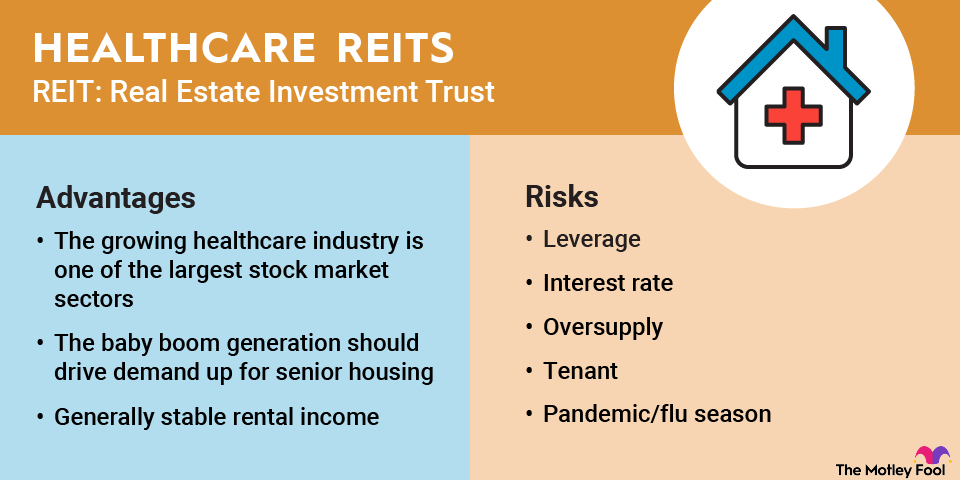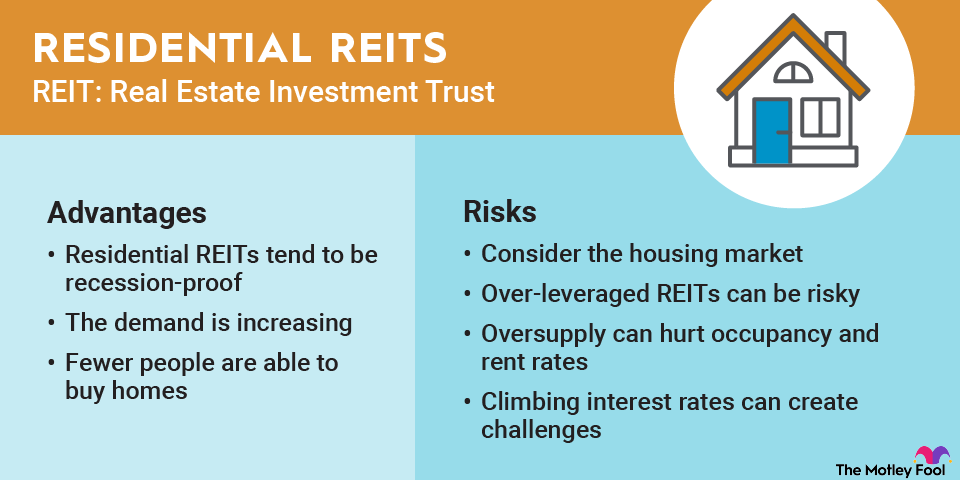Farmland REITs are a special type of real estate investment trust that owns land leased to farmers. These REITs provide anyone with an easy way to invest in farmland.
Historically, the sector has produced attractive long-term total returns boosted by steadily appreciating land values and crop-driven rental income. Farmland has also traditionally been an excellent inflation hedge and isn't as volatile as other asset classes.

These characteristics make farmland REITs a superb way for investors to diversify their portfolios. Here's a closer look at how to invest in farmland REITs. We'll dig deeper into how they make money, examine their advantages and risk factors, and consider a couple of farmland REIT investment options.
Understanding farmland REITs
Farmland-focused REITs typically serve two purposes:
- They provide capital to farmers: Farmland REITs commonly complete sale-leaseback transactions with farmers by acquiring land and other agricultural real estate and then leasing it back to the farmer under a long-term lease. The transactions can unlock the value of the farmer's land while giving them the capital to expand their farms.
- They provide investors with access to farmland: Historically, only farmers or wealthy individuals could invest in farmland due to the high cost and operational expertise required. However, REITs enable anyone to invest in farmland.
Real estate investments by farmland REITs can include:
- Farmland supporting annual row crops, permanent crops, and commodity crops
- Water rights
- Properties related to farming, such as cooling facilities, processing buildings, packaging facilities, and distribution centers
- Loans made to farmers secured by farm real estate
Farmland REITs typically sign long-term triple net leases (NNN) with farmers. This lease structure provides the REIT with stable cash flow that tends to rise each year either at a fixed rate or via an inflation-linked escalation clause.
In addition, farmland REITs earn a percentage of a farm's gross revenue through participation leases on some farms. Participation income can vary from year to year, depending on crop prices.
Farmland REITs will also own and operate some farms directly, entitling them to all the crop income. They can also lease some of the farm's land for other purposes.
Advantages of investing in farmland REITs
Farmland provides investors with three crucial advantages:
- Portfolio diversification: Farmland offers investors uncorrelated returns compared to other major asset classes such as stocks, bonds, and cryptocurrencies. That makes it an excellent way to diversify a portfolio and help reduce its overall volatility.
- Inflation hedge: Farmland has generally offered a better hedge against inflation than stocks, bonds, and gold. Historically, there has been about a 70% correlation between the value of U.S. farmland and the consumer price index. Farmland investments with participation rents tend to benefit from inflation because rising food prices should enable the farm to sell its crops for a higher price.
- Attractive total returns: Farmland provides investors with two sources of returns: rental income and capital appreciation. The two sources delivered a combined average annual return of 10.2% from 1992 to 2024.
Risks of investing in farmland REITs
While farmland has been an excellent long-term investment, it isn't without risk. Farmland REITs face interest rate risk, which is common to all REITs. Rising interest rates make it more expensive for REITs to borrow money. That can be an issue if they have a large upcoming debt maturity or floating-rate debt. It can also affect their ability to make acquisitions.
Meanwhile, REIT valuations tend to fall during periods of rising interest rates. Higher interest rates provide yield-focused investors with more attractive, lower-risk options such as bonds or bank certificates of deposit (CDs). REIT dividend yields need to rise to compensate investors for their higher risk profiles.
In addition, farmland REITs face some specific risk factors:
- Natural disasters: Droughts, wildfires, insect infestations, and other natural disasters can affect a farm's harvest and ability to pay rent.
- Crop prices: Crop prices can be very volatile and affect farm income, especially for annual commodity crops such as corn, soybeans, and wheat.
- Farmer-tenants: Although farmland has been an excellent investment overall, farming has been a much more challenging business due to natural disasters, crop prices, equipment costs, labor costs, debt, and other issues. If farmers run into financial trouble, they may be unable to make their rental payments.
Two farmland REITs to consider in 2025
| Name and ticker | Market cap | Dividend yield | Industry |
|---|---|---|---|
| Farmland Partners (NYSE:FPI) | $424.1 million | 2.39% | Specialized REITs |
| Gladstone Land (NASDAQ:LAND) | $330.6 million | 6.32% | Specialized REITs |
1. Gladstone Land
Gladstone Land owned 148 farms with 100,000 acres in 15 states as of late 2025. This farmland REIT also owned 55,000 acre-feet of banked water in California. The company primarily owns farms in regions where its tenants can grow fresh produce row crops, such as berries and vegetables, that are planted and harvested annually.

NASDAQ: LAND
Key Data Points
It also owns farms that produce permanent crops such as almonds, apples, cherries, figs, lemons, olives, pistachios, blueberries, and wine grapes. Permanent crops typically get planted every 10 to 20 years and are harvested annually. The REIT leases the land to farmers under long-term NNN leases.
Gladstone Land focuses on fresh-produce farms because they're less risky than commodity crops. They tend to have better water access, are better insulated from crop price volatility, are less dependent on government subsidies and tariffs for protection, have lower storage costs, and have higher rental rates.
The REIT's focus on fresh produce has paid off for investors. Gladstone has made monthly dividend payments consistently since its initial public offering (IPO) in 2013.
The REIT has increased its dividend payment 35 times over the past 41 quarters (as of late 2025) for a total of more than 55%, driven by higher lease revenue and its ability to acquire new farms. Gladstone aims to increase its dividend at a rate that keeps pace with or exceeds inflation.
2. Farmland Partners
Farmland Partners owned or managed 125,000 acres of farmland in 15 states as of late 2025. Roughly 60% of this REIT's portfolio by value (and 90% of its acreage) was farms growing commodity crops such as corn, soybeans, wheat, rice, and cotton. The other 40% included farms growing specialty crops such as tree nuts, citrus, and avocados.

NYSE: FPI
Key Data Points
Farmland Partners receives fixed rental payments and variable payments. Its focus on commodity crops provides investors with exposure to increasing global food demand.
This REIT also provides auction, brokerage, third-party farm management, and third-party asset management services. Additionally, it generates income from solar and wind energy, plus recreational rents, crop sales, and crop insurance from the farms it operates.
Farmland Partners acquires farms based on their agricultural value and uses alone. However, some farms have higher and better uses, such as for real estate development or renewable energy.
The company has begun working with renewable energy developers to turn some land into solar or wind farms. Because solar displaces a large amount of agricultural land, the properties no longer earn farm rent but generate 3 times more revenue than farm leases. Its farms also support wind projects that generate additional income, as wind turbines displace only a small amount of agricultural land.
Smart strategies for investing in farmland REITs
Not all farmland is the same. Likewise, not all farmland REITs are similar. Because of that, investors should take a strategic approach to investing in farmland REITs, even though there are only two publicly traded ones.
You should evaluate farmland REITs on the following factors to ensure you're adding the one that best suits your investment thesis:
- Area of farming: You should evaluate a REIT's farming focus. There are three areas of farming: annual fresh produce, permanent crops, and commodity crops. Fresh produce and permanent crops tend to be more profitable and have lower price volatility, while commodity crops have greater price upside and benefit from government support.
- Geographic focus: You should evaluate a REIT's geographic focus. States like California have excellent farmland for fresh produce and permanent crops but often experience droughts. Other states, such as Iowa, tend to be great places for commodity crops.
- Financial sustainability: You should evaluate a REIT's financial situation. Tenent or balance sheet issues could make it difficult for a REIT to pay dividends.
How to invest in farmland REITs
The nice thing about farmland REITs is that anyone can easily invest in them. Here's a step-by-step guide on how to invest in farmland REITs:
- Open your brokerage app: Log in to your brokerage account where you handle your investments.
- Search for the stock: Enter the ticker or company name into the search bar to bring up the stock's trading page.
- Decide how many shares to buy: Consider your investment goals and how much of your portfolio you want to allocate to this stock.
- Select order type: Choose between a market order to buy at the current price or a limit order to specify the maximum price you're willing to pay.
- Submit your order: Confirm the details and submit your buy order.
- Review your purchase: Check your portfolio to ensure your order was filled as expected and adjust your investment strategy accordingly.
Related investing topics
Farmland REITs can help diversify your portfolio
Farmland REITs enable anyone to harvest the benefits of investing in farmland. Historically, the sector has been an excellent investment, delivering attractive total returns from rental income and value appreciation. On top of that, farmland is an excellent inflation hedge and is uncorrelated with the markets. These features make it an ideal complement to a diversified portfolio.



